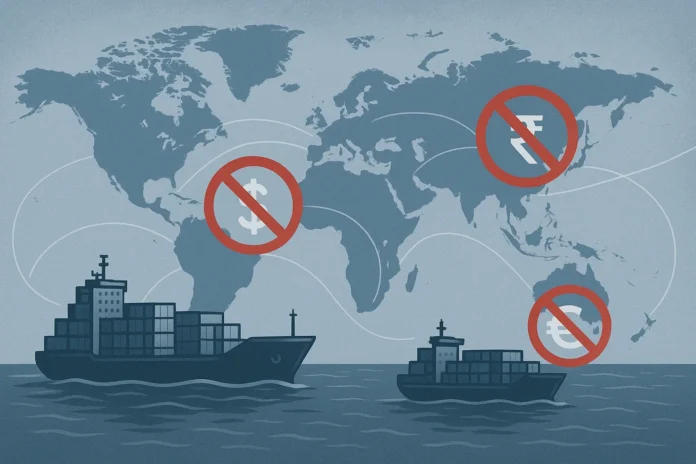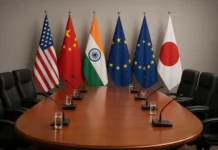Sanctions have become one of the most powerful tools in modern geopolitics. They are designed to punish, deter, or isolate nations that violate international norms — without resorting to military action. Yet, in an increasingly interconnected world, sanctions have far-reaching consequences that extend far beyond their targets.
From restricting oil exports in Iran and Russia to banning high-tech components in China, economic sanctions reshape global trade flows, influence commodity markets, and even reconfigure international alliances. What began as a diplomatic weapon has now evolved into a strategic lever affecting every corner of the global economy.
Understanding Sanctions: A Tool of Economic Power
Sanctions are essentially economic penalties imposed by one or more countries against another state, organization, or individual. These can take many forms — trade restrictions, asset freezes, financial blacklists, or bans on technology transfer.
Major global players such as the United States, European Union, and United Nations frequently use sanctions to respond to violations like nuclear proliferation, terrorism, or human rights abuses.
However, the scale and coordination of sanctions in the 21st century — especially after Russia’s 2022 invasion of Ukraine — have demonstrated how deeply they can alter global economic architecture.
The Ripple Effect on Global Supply Chains
Sanctions rarely remain confined to one country. Because modern trade networks are interlinked, even targeted sanctions can disrupt entire supply chains.
For example:
-
Russia’s energy sanctions triggered a global spike in oil and gas prices, forcing Europe to seek alternative energy sources.
-
Technology sanctions on China — including restrictions on semiconductors — disrupted production for electronics manufacturers worldwide.
This has led to a growing phenomenon called “supply chain realignment”, where companies shift manufacturing to neutral nations such as Vietnam, India, and Mexico to bypass restrictions.
The result is a fragmented global trade ecosystem, with nations and corporations redrawing commercial routes based on geopolitical alliances rather than efficiency.
Impact on Currency and Financial Systems
One of the most significant effects of sanctions is seen in global finance.
When countries are cut off from systems like SWIFT — the international banking network — their ability to trade, borrow, or pay in global markets collapses.
Russia’s partial removal from SWIFT in 2022 forced Moscow to develop alternate payment systems, while also accelerating China’s push for digital yuan and India’s UPI-based trade settlement.
This fragmentation has given rise to discussions about a “de-dollarized” world, where alternative currencies or payment systems reduce dependence on the U.S. dollar. While this shift remains limited, it reflects a fundamental restructuring of global finance prompted by sanctions.
Commodity Market Volatility
Sanctions on resource-rich nations directly affect global commodity markets.
When exports are blocked, supply shrinks, and prices surge — impacting inflation worldwide.
For example, sanctions on Iran and Russia have disrupted the global oil and gas balance. Similarly, sanctions on fertilizer and grain exports from Eastern Europe have led to food price spikes in developing economies.
These disruptions illustrate how economic warfare can unintentionally harm neutral countries, amplifying inequality between developed and developing markets.
The Rise of Parallel Trade Networks
In response to sanctions, nations often develop parallel trade networks — alternative routes, currencies, and partners that allow restricted goods to move indirectly.
Russia has deepened trade ties with China, India, and Turkey, while Iran relies on informal shipping and barter deals.
Meanwhile, sanctioned companies often use third-country intermediaries to continue limited global transactions.
Although these systems are less efficient, they reveal how sanctions rarely achieve total economic isolation. Instead, they reshape global trade geography, creating new hubs in politically neutral zones.
Geopolitical Reordering: The Sanctions Divide
Sanctions also redraw geopolitical alliances.
Western nations — led by the U.S. and EU — dominate the rules-based economic order, while countries in Asia, the Middle East, and Africa increasingly pursue strategic neutrality.
The result is an emerging “Sanctions Divide”:
-
The sanctioning economies (the West) maintain moral and strategic dominance.
-
The non-aligned economies (Asia, Latin America, Africa) gain leverage as alternate trading partners.
This divide mirrors the Cold War era, but with economic interdependence instead of military blocs. As more nations seek autonomy in trade and technology, multipolar economic zones are replacing the old unipolar order.
Unintended Consequences and Economic Adaptation
Sanctions are double-edged. While they can weaken a target economy, they also often strengthen domestic self-reliance.
Russia, after Western sanctions, redirected trade toward Asia, boosted local production, and built alternative payment channels. Similarly, Iran developed one of the Middle East’s most resilient underground economies.
In the long run, excessive sanctions may erode their strategic effectiveness, as targeted countries innovate around restrictions.
Economists warn that overuse of sanctions could encourage global “sanction fatigue,” leading to policy fragmentation and reduced international cooperation.
The Future of Sanctions and Global Trade
As geopolitical rivalries intensify, sanctions are likely to become more targeted, digital, and technology-focused.
Rather than broad trade bans, future sanctions may involve AI algorithms blocking real-time transactions, or restrictions on critical technologies like quantum computing and cybersecurity tools.
The key challenge for policymakers will be balancing moral objectives with economic consequences. Sanctions that are too broad risk global inflation, while overly narrow measures may fail to achieve deterrence.
Ultimately, the world is moving toward a “dual economy” — one governed by Western rules, and another built on alternative systems. The efficiency of global trade will depend on how well nations navigate this complex, divided landscape.
Conclusion
Sanctions have evolved from being tools of diplomacy to instruments of global transformation. They no longer punish just one country — they reshape how the world trades, pays, and prospers.
While they remain essential in enforcing international law, their widespread use highlights a paradox: the pursuit of justice through economic isolation often leads to global disruption.
In a world where politics, finance, and technology are deeply connected, sanctions are rewriting the rules of globalization — one trade route at a time.




